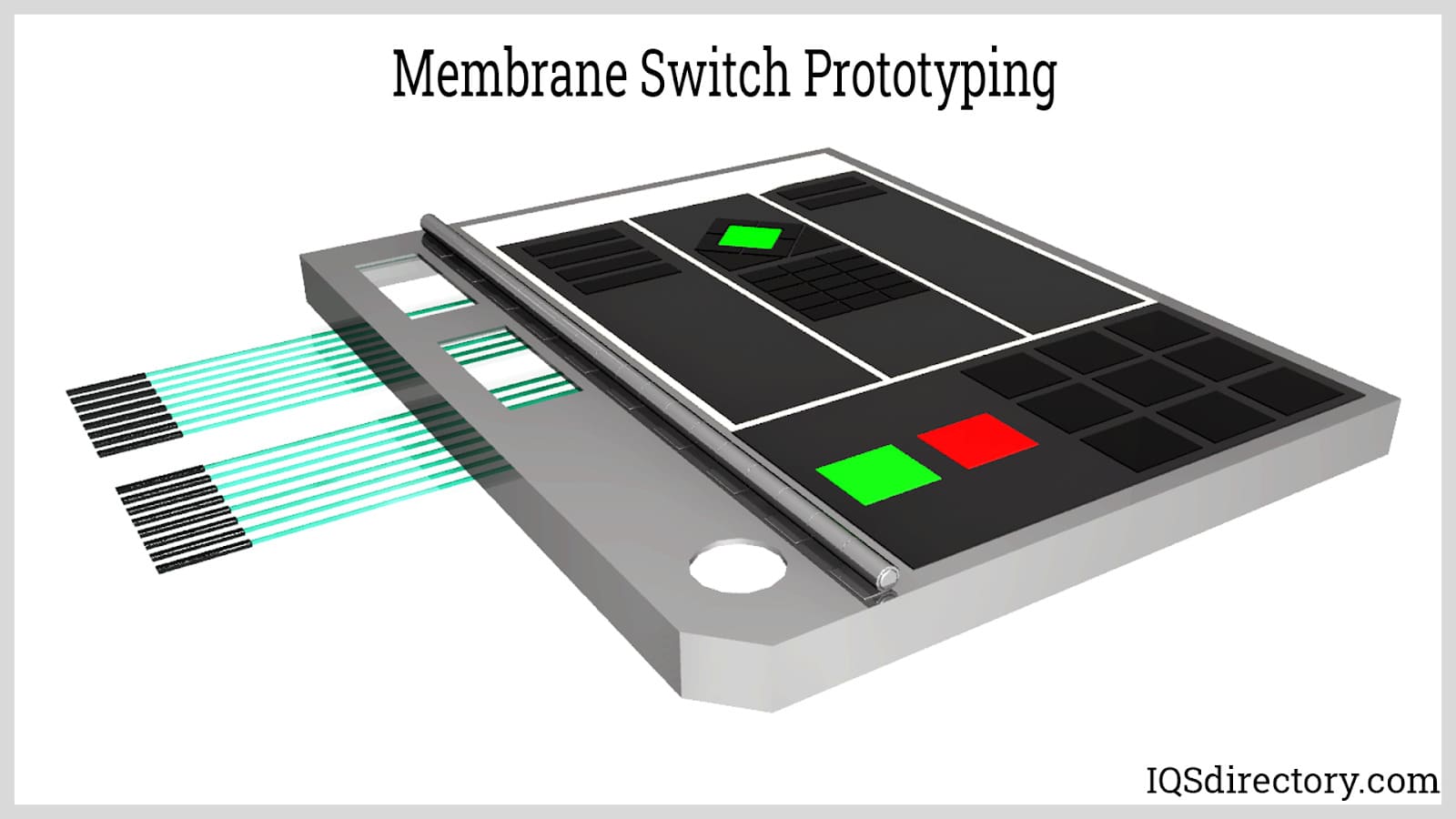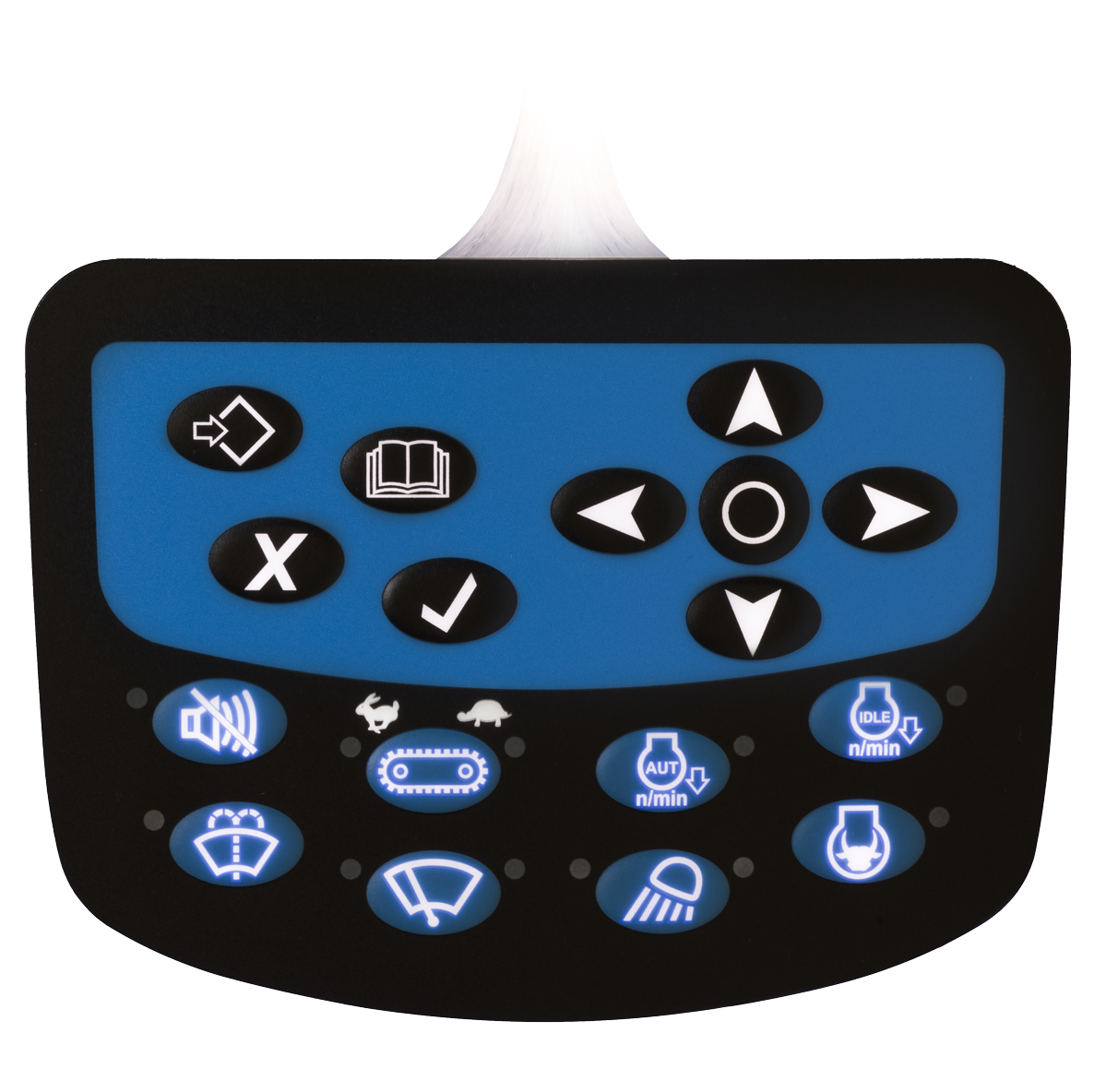When tailored design needs arise, a specialized membrane switch manufacturer is the ideal choice.
When tailored design needs arise, a specialized membrane switch manufacturer is the ideal choice.
Blog Article
All Regarding Membrane Layer Change: Understanding Its Layout and Functionality
When you assume about the control user interfaces in contemporary devices, membrane layer buttons typically enter your mind. These components are a lot more than just buttons; they blend design and performance perfectly. Comprehending how they work and what makes them efficient can change your viewpoint on daily electronics. However, there are nuances to their style and efficiency that you may not be mindful of. Let's discover what sets membrane changes aside from various other control systems.
What Are Membrane Buttons?

Membrane layer switches can also be customized pertaining to shape, size, and graphics, enabling manufacturers to create one-of-a-kind interfaces tailored to specific items. On the whole, membrane layer buttons play a considerable role in boosting user experience across a wide variety of applications.
Just How Membrane Switches Over Job
When you press a trick on a membrane layer switch, it turns on a simple yet effective device. The top layer, often made from flexible material, lowers onto a conductive layer under it. This activity bridges the void between conductive traces, completing an electric circuit. As quickly as the circuit shuts, it sends a signal to the tool's controller, which translates your input.
You'll see that the tactile comments differs based upon the switch style, providing either a soft click or a more obvious reaction. Once you release the trick, the membrane returns to its original placement, resuming the circuit and quiting the signal. This process takes place virtually instantly, making certain a receptive customer experience.
Membrane buttons are preferred because of their sturdiness and resistance to dirt and wetness, making them perfect for numerous applications, from household home appliances to medical gadgets. Recognizing this operation aids you value their extensive usage.
Key Components of Membrane Buttons
Understanding the essential elements of membrane switches is fundamental for grasping their performance and style. At the core, you'll discover the graphic overlay, which supplies the visual user interface for customers. Under that, there's a spacer layer that divides the circuit layers, making sure that they do not make call up until pressed. The circuit layer is where the magic takes place; it contains conductive traces that finish the circuit when you push the switch. One more vital component is the glue support, permitting the switch to stick to surfaces securely. Ultimately, the safety layer guards versus ecological elements and wear, prolonging the switch's lifespan. Each part plays a substantial role in making sure dependable efficiency and user communication. By comprehending these components, you'll obtain understanding into how membrane switches over operate and their relevance in various applications.
Products Utilized in Membrane Switch Design
The efficiency and resilience of membrane layer switches greatly rely on the materials made use of in their design. You normally come across polyester and polycarbonate as main substrates because of their superb strength and adaptability. These products withstand scrapes and chemicals, making them ideal for requiring atmospheres.
The conductive layers usually use silver or carbon, picked for their dependability and conductivity. membrane switch manufacturer. Silver supplies exceptional efficiency, while carbon is an economical alternative. For the overlay, you might consider a matte or glossy surface, depending upon your aesthetic demands and user experience
Adhesives play an important duty also; they bond layers securely and guarantee durability. Make sure to select adhesives that endure ecological factors like temperature and humidity. Finally, do not forget the relevance of a great printing technique for graphics, as it improves both functionality and aesthetic allure. Picking the best materials will certainly assure your membrane button stands the examination of time.
Layout Factors To Consider for Membrane Layer Buttons
While designing membrane buttons, it's crucial to take right into account different factors that influence their functionality and customer experience. Start by focusing on the format and read what he said button dimension; make specific they're user-friendly and very easy to navigate.
Do not forget the graphic design; clear labeling and shade contrast are substantial for visibility. Validate your design fits environmental aspects, like dampness or temperature level variants, which might impact efficiency. Finally, keep in mind the value of testing prototypes with real individuals to collect feedback and make needed changes. This repetitive process aids you refine the style, validating it satisfies both functional and visual requirements effectively. By thoroughly taking into consideration these aspects, you'll create a membrane switch that boosts usability and complete satisfaction.
Applications of Membrane Switches
Membrane layer buttons are flexible elements located in numerous applications, from industrial devices to customer electronic devices. You'll see their effect in devices that require durable interfaces and in gadgets that gain from smooth styles. Comprehending these applications helps you value the capability and functionality of membrane layer buttons in daily technology.
Industrial Devices Use
When you're looking to improve the performance of industrial tools, membrane layer buttons provide a reliable service that integrates longevity with straightforward design. These switches are ideal for extreme settings, giving resistance to dust, dampness, and chemicals. Embrace membrane switches to enhance your procedures and improve overall performance.
Consumer Electronics Combination
In the domain name of customer electronics, membrane layer switches play an essential role in enhancing customer interaction and device capability. Membrane buttons likewise assure longevity and resistance to dust and moisture, prolonging the life-span of your electronic devices. By selecting membrane layer switches, you improve not just the performance but additionally the style of your gadgets, making everyday communications smooth and enjoyable.
Benefits and Drawbacks of Membrane Buttons
While membrane switches supply a variety of advantages, they additionally come with some downsides that you should think about. One substantial advantage is their compact style, making them perfect for space-constrained applications.

However, there are drawbacks. read this Membrane switches can have a shorter life-span contrasted to mechanical buttons, specifically under hefty use. They can additionally be less responsive, which may impact user feedback throughout procedure. If damaged, fixing them can be tough and frequently needs complete substitute. Inevitably, their sensitivity to extreme temperature levels and ecological conditions may restrict their effectiveness in particular settings. Stabilizing these advantages and disadvantages will aid you establish if weblink membrane switches are the appropriate suitable for your project.
Frequently Asked Questions
The Length Of Time Do Membrane Changes Usually Last?
Membrane layer changes typically last in between 5 to ten years, depending on usage and ecological conditions. You'll desire to examine aspects like wear, direct exposure to wetness, and temperature variations to evaluate their long life successfully.
Can Membrane Switches Be Personalized for Details Layouts?
Yes, you can tailor membrane switches to fit details designs (membrane switch manufacturer). You'll have the flexibility to choose shades, forms, and designs that match your task's requirements, ensuring they blend seamlessly with your overall visual
What Is the Expense Variety for Membrane Layer Switch Production?
The cost variety for membrane layer switch production commonly falls in between $1 and $10 each, depending upon aspects like layout complexity, quantity, and materials. You can obtain quotes from suppliers to discover the very best alternative.

Are Membrane Layer Changes Waterproof or Immune?
Membrane layer buttons can be designed to be water resistant or immune, depending upon materials utilized and building approaches. If you need them for wet environments, guarantee you specify those demands during the style process.
Just How Do Membrane Layer Switches Over Compare to Conventional Buttons?
Membrane switches are usually thinner and extra adaptable than conventional buttons, using a sleek layout. They're commonly simpler to cleanse and integrate, yet may not offer the tactile feedback you're made use of to with mechanical alternatives.
Verdict

Report this page